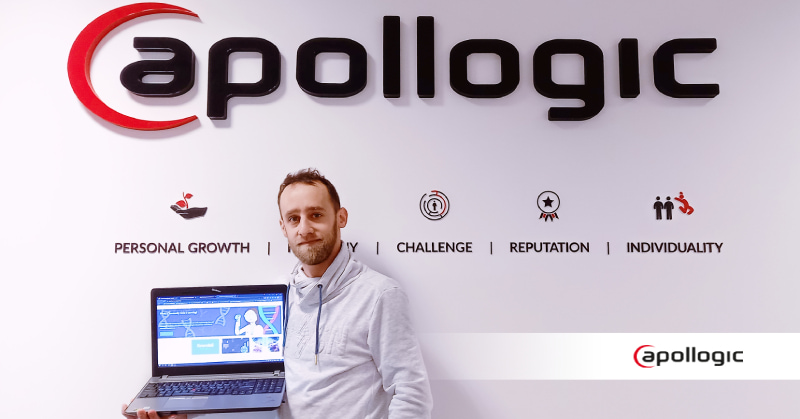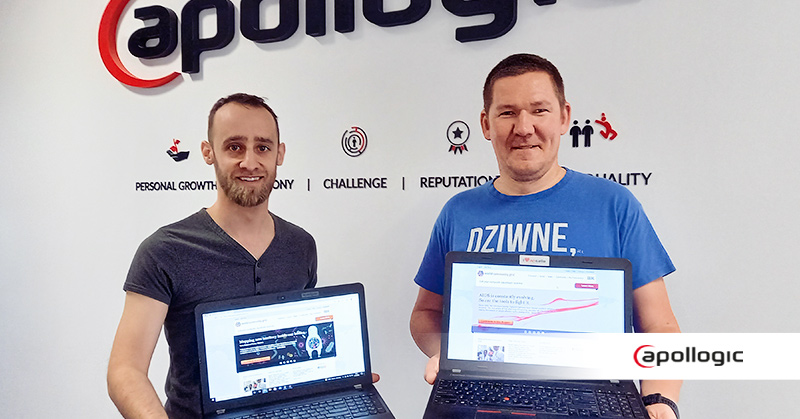World Community Grid project we support will now be run and managed by Krembil Research Institute

Piotr Ożga, Software Development Manager
- 18th Ferbruary 2022
- Employee initiatives
- 3 min

In September 2021, changes were announced in the philanthropic project managed so far by IBM. World Community Grid will now be run and supported by Krembil Research Institute, the leading research institution in Toronto. IBM launched the WCG initiative in 2004, aiming to create a network allowing to carry out distributed computing on the volunteers’ devices.
The change of platform maintainer will not affect the further operation of the project, and ongoing research will continue. Volunteers will still be able to share the computing power of their devices to support researchers in their attempts to find more effective treatments for COVID-19, tumors, AIDS or tropical diseases.
However, due to the migration of the solution between the two organizations, computing won’t be available as of February 14 until the entire process is safely completed, which will be at the end of March or April. The exact date of restoration of the project isn’t announced yet. In the meantime, I decided to summarize Apollogic’s work on this project so far.
Wyświetl ten post na Instagramie
What have we accomplished?
We deployed the infrastructure of ten unused laptops one by one, starting in April 2021, with some computers running Windows and some running Linux. We found a room at Apollogic’s office where we kept all devices, connected them to electricity, and – for security reasons – to a separate network. Walking into this room, you can feel a pleasant breeze of warm air. It’s worth emphasizing that all devices use 100% of the processor’s capabilities the entire time.
What are the results of our efforts?
I need to warn you that the number I am about to give may seem unreal, so I hasten to explain. Our infrastructure, consisting of ten laptops, has generated about twenty-five years of computing time, sending back over 45,000 converted samples to the WCG. Most of the power has been dedicated to the Mapping Cancer Markers project, aimed at better understanding the tumor biology, identifying markers associated with different types of cancer and searching for effective ways to fight the disease.
Where did twenty-five years of work come from when ten laptops send their computing power for less than a year? Each of the processors in our computers is multi-core and multi-threaded, which means that one device can calculate several samples at the same time. Thus, one device with four threads can generate ninety-six hours of computing time in a day.
Does the infrastructure require much attention?
Once up and running, the computers supporting the WCG project don’t require much of our attention. They will reboot from time to time, for example, due to an update or shut down as a result of a temporary power outage, which happens in the case of laptops with dead batteries. In such cases, all it takes is to restart the device to restore operations automatically. Detecting computers that need to be turned on is easy because the administration panel on the WCG website allows us to monitor the devices we have connected to the network and see when they last communicated with the WCG server.
Did all the computers last?
So far, only one of our laptops started to fail and was withdrawn from the project. The device was already showing problems with the matrix, but a working processor allowed it to give its computing power for a good cause. Unfortunately, after more than a year of constant work, the cooling system started to fail, making the computer unfit for further calculations. I have to admit that I am very impressed with how today’s laptops running at total capacity around the clock can handle working in such conditions. Earlier I assumed that office laptops are unsuitable for such heavy workloads, but I was positively surprised.
What will happen to our computers over the break?
The two-month break in the operation of the World Community Grid doesn’t tone down our enthusiasm and readiness to support scientific research with available hardware resources. We plan to test our computers to contribute to the Rosetta@Home project, aiming to design protein structures and complexes, which may help find a cure for many modern diseases. Cutting-edge research is led by scientists at the University of Washington. If our computers prove to be powerful enough, we will use them to support this project.
An initiative that started as just an experiment has turned into a regular part of our business. We’re excited to support innovative research and hope that scientists can solve some of the world’s biggest healthcare challenges.
- On 18/02/2022







0 Comments